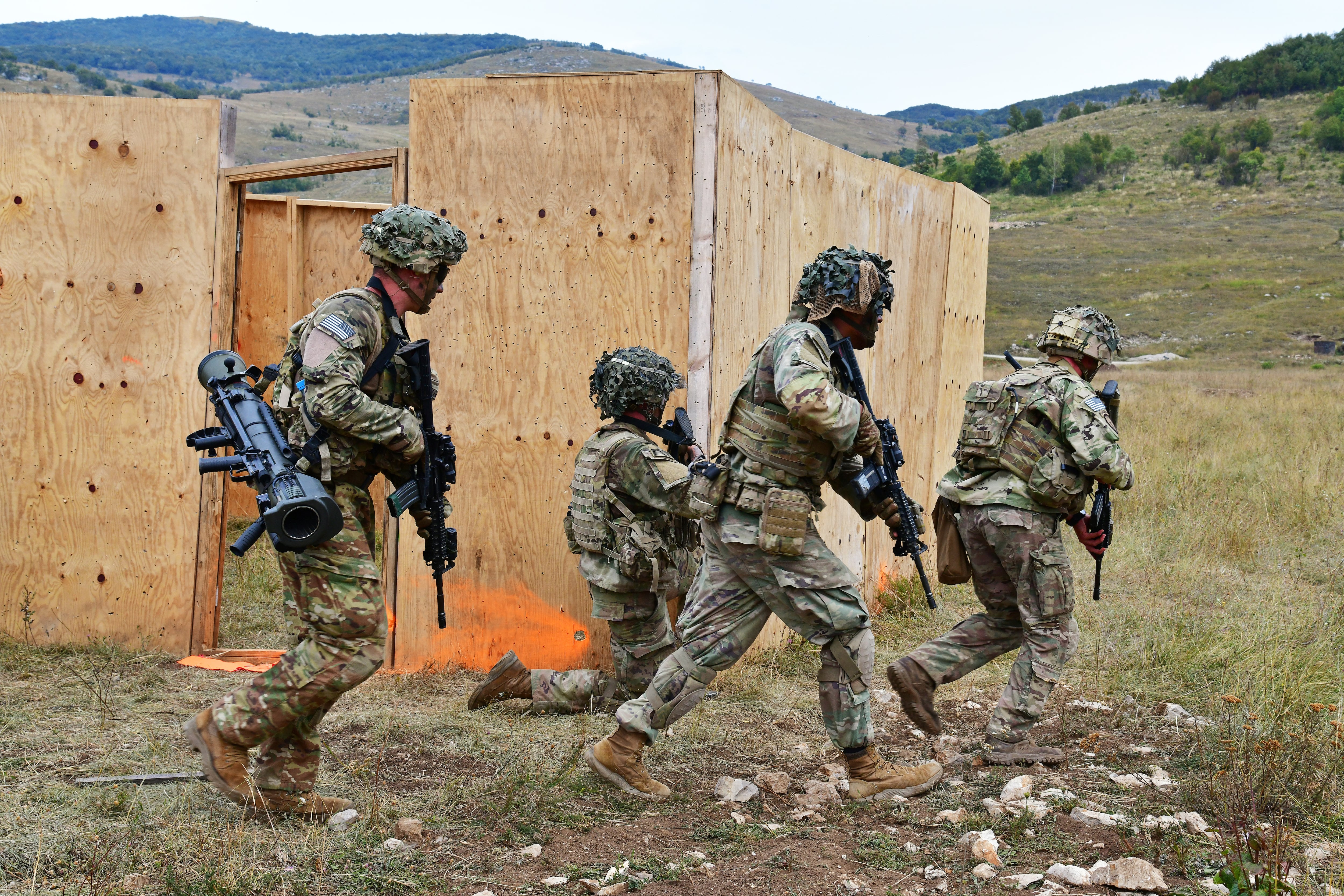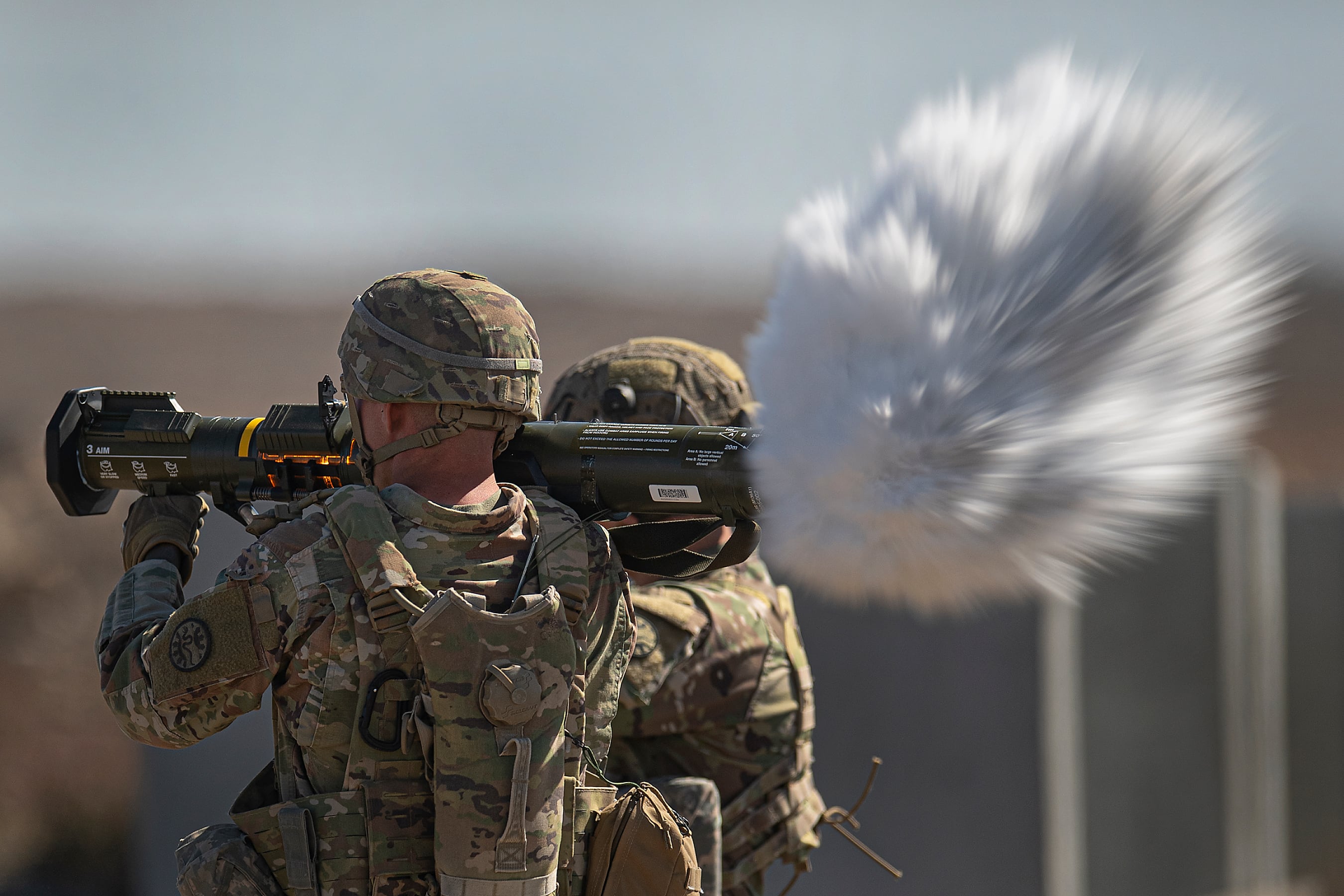Big changes are coming to Army training ranges and how the Army connects with other services to do large-scale training across multiple states. Even at local levels, basic tasks like machine gun fires will require innovative solutions from soldiers as they are divvied out new weapons.
Army leaders such as Brig. Gen. Charles Lombardo, head of Combined Arms Center-Training, and base commanders, primarily in the Southwestern United States, are working to connect their ranges to provide more long-distance, realistic training for aviation and ground units.
Lombardo spoke with Army Times at the Association of the U.S. Army annual meeting and exposition on Monday.
He gave the example of an F-35 pilot leaving Luke Air Force Base, Arizona, flying to a range to practice gunnery and returning to home station.
RELATED

Instead, that same pilot could, in the course about five hours, hit multiple bases for simulated electronic jamming, which is only approved for certain areas in the United States. Then they could communicate with high-altitude military drones and drop live ordnance at the National Training Center at Fort Irwin, California, before returning home.
That’s multiple missions instead of one and taking “stovepiped” ranges and “stitching” them together, Lombardo said.
The capabilities are there, he added. It’s simply a matter of connecting the commanders at each location. The other services do this to an extent, as well. But the Army hasn’t done it at scale in a long time.
And the move doesn’t just benefit the aviation side, according to Lombardo.
This past year, the CAC-T saw 10 privates working as forward observers in a classroom setting at Fort Riley, Kansas, drop ordnance in California.
The privates viewed simulated terrain through Virtual Battle System III. The system allowed them to, in real time, cast sensors over the environment, identify targets and call for fire.
The soldiers were looking through digital binoculars and “physically shooting live bullets” at NTC, six states away.
Lombardo emphasized that those opportunities save time and money. Those soldiers were at home station doing training that would have cost money to send them and their equipment to do.
But the work also goes beyond jet fighters and simulated goggle vision.
The Army is set to field its Next Generation Squad Weapon, a 6.8 mm rifle and automatic rifle that will double the range of the existing 5.56 mm M4 and M249 Squad Automatic Weapon.
Many of the ranges across Army bases are simply not built to handle that kind of round. And physically changing all of them would cost quite a lot.
Lombardo estimated that a single machine gun range set up for current weaponry would cost about $3 million to adjust to the new capabilities. Fort Campbell, Kentucky, alone has at least half a dozen such ranges, he said.
Instead, Lombardo is pushing for trainers, especially master gunners, to get creative.
Some of that will involve new approaches to using existing space.
Lombardo recalled his time at Fort Bliss, Texas, with 1st Armored Division. His then-master gunner put targets in trenches, bunkers and tethered the event to a nearby Military Operations in Urban Terrain facility.
That all came from a “range in the box” kit provided by the division, he added.
“We can’t afford to rebuild ranges everywhere, we have to allow NCOs to use their imagination and build something better than we ever could have come up with,” Lombardo said.
Todd South has written about crime, courts, government and the military for multiple publications since 2004 and was named a 2014 Pulitzer finalist for a co-written project on witness intimidation. Todd is a Marine veteran of the Iraq War.




